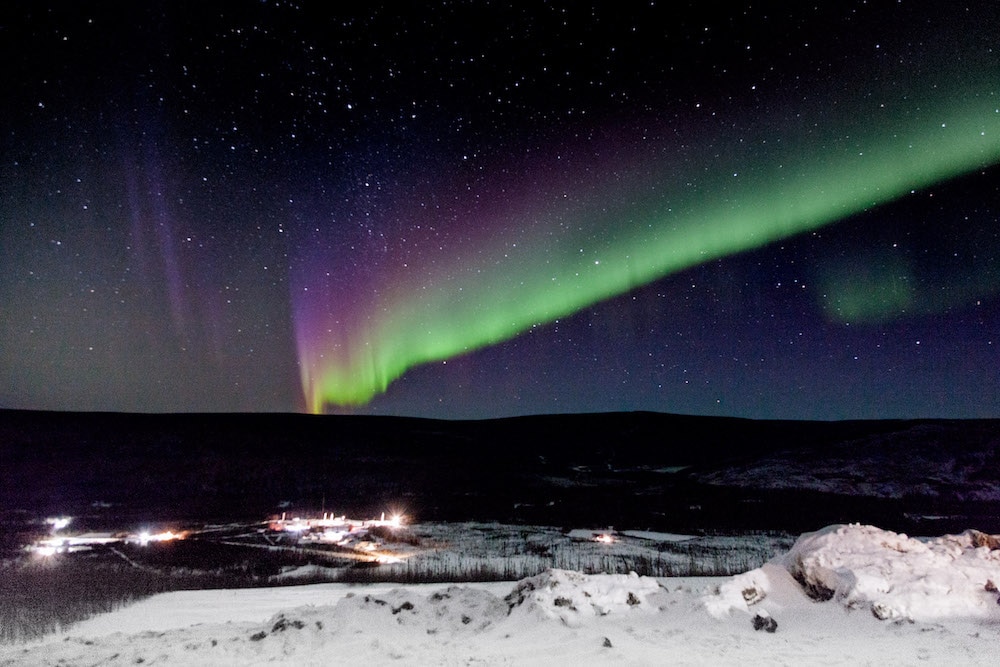Create a free profile to get unlimited access to exclusive videos, sweepstakes, and more!
NASA just zoomed a rocket right into the northern lights
This is so much cooler than fireworks.

Have you ever seen those scenes in sci-fi movies where someone is having an out-of-body experience and floating around in a cosmic light show not unlike an aurora?
NASA has now sent a rocket right through an actual aurora. No humans were onboard, but it did beam the view — on a nano level — back to Earth. INCAA is a duo of sounding rockets, designed to soar through one of these space rainbows to get a closeup of the wild physics that happen where particles collide. Rockets like this only shoot into space for a few minutes. Flashes of an aurora can form and vanish in minutes, so sounding rockets are ideal for studying them. They were launched one after the other once an aurora was seen above.
Auroras only look supernatural. For this phenomenon to occur, the neutral gas in Earth’s atmosphere has to be morphed into plasma. Charged particles from the solar wind run into our magnetosphere all the time (which is why we have to watch out for geomagnetic storms). To create the colorful, and reactive, plasma of an aurora, they need to energize electrons to the point that they break free from their atoms and become positively charged. These electrons then swarm into the atmosphere and crash into neutral particles which then light up.
“Friction is a great analogy,” said Stephen Kaeppler of Clemson University, principal investigator for the INCAA mission, in a press release. “We all know that we rub our hands together, you're going to get heat. It’s the same basic idea, except we're dealing with gases now instead.”
Each INCAA rocket carried a separate payload. The first one to launch released vapor tracers, made of compounds similar to those used in fireworks, into the sky. Besides generating a lot of oohing and aahing (they are visible from the ground), tracers also measured charged particles in the atmosphere. Movements of atmospheric winds and ions, or atoms that lose or gain an electron for a change in charge, can show up in the chemical haze of vapor tracers. Neutral and ionized gases dance in the atmosphere during an aurora.
What Kaeppler and his team really wanted to find out is where exactly the glowing particles of gas that have been switched on by electricity meet neutral particles. The boundary can be pushed higher or lower by an aurora, or sometimes end up collapsing. Previous studies have found auroras and auroral forms occurring in different layers of the magnetosphere. Of course, those that skywatchers are always looking out for are the spectacular Aurora Borealis in the extreme northern latitudes (where INCAA is headed) and Aurora Australis in the south, but auroral activity has been seen in more unexpected regions of the atmosphere, even near the equator.
After the first INCAA rocket left behind clouds of vapor tracers when it reached a height of about 186 miles, the winds that are dyed, in a way, revealed otherwise invisible movements to the researchers. The rocket that flew up right afterward got to about 125 miles, high enough to see how hot and dense the auroral plasma is. Plasma in an aurora can reach anywhere from 400 to over 2,000 degrees Fahrenheit. Particles can be supercharged from 1,000 to 15,000 electronvolts. As it accelerates through an electric field, the amount of kinetic energy an electron gains, with a difference of one volt, is one electronvolt.
Too bad we can’t stand on Jupiter to gaze at the night sky there, because Jovian auroras are supposed to be out of this world — literally.
w


























